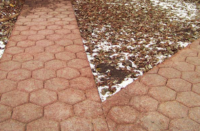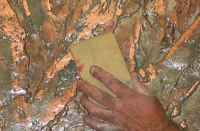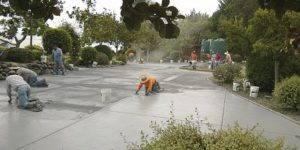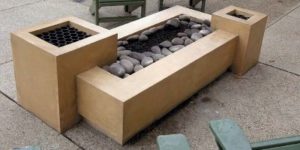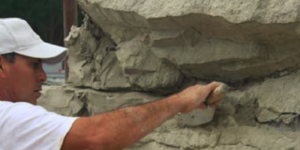 Concrete steps can be the centerpiece of a house’s façade and a showpiece of the decorative concrete craft.
Concrete steps can be the centerpiece of a house’s façade and a showpiece of the decorative concrete craft.
Doug Bannister of The Stamp Store in Oklahoma City offers a couple of suggestions for patterning stairs. First, a landing or walk patterned to simulate small tiles or blocks should be separated from the stairway by a pattern of larger stones or tiles. This creates a visual and texture boundary that alerts people to the coming change in elevation so they won’t trip. Such a border also adds realism to the texture because in real stonework, edges and curbs are made of larger stones or blocks that aren’t dislodged as easily as small blocks.
For the same reason, Bannister also suggests using skins to make the treads look like one or two big slabs of slate or sandstone rather than tooling them to look like blocks. Not only does this offer a level surface to walkers, but it also reflects how a stonemason would actually construct stairs.
Mark Foreman of Bomanite in Roseville, California, agrees that steps should be highlighted in a contrasting color from the walkway for safety. Instead of integral color or acid stain, Foreman prefers to make a slurry of color hardener and apply it as a plaster while the underlying concrete is still curing. The earlier the slurry is applied, the stronger the bond it forms with the concrete, although Foreman says he’s never had a delamination problem.
This method offers several advantages over integral color or acid staining. The slurry is comparable in hardness to a 7.2-sack concrete mix, so it holds up well under pedestrian traffic. The color comes out even, with a minimum of dusting or mottling. It’s easy to texture the material. And if the underlying concrete needs to be cut to repair a pipe or something, it’s easy to patch it with more color hardener and match the surrounding material.
